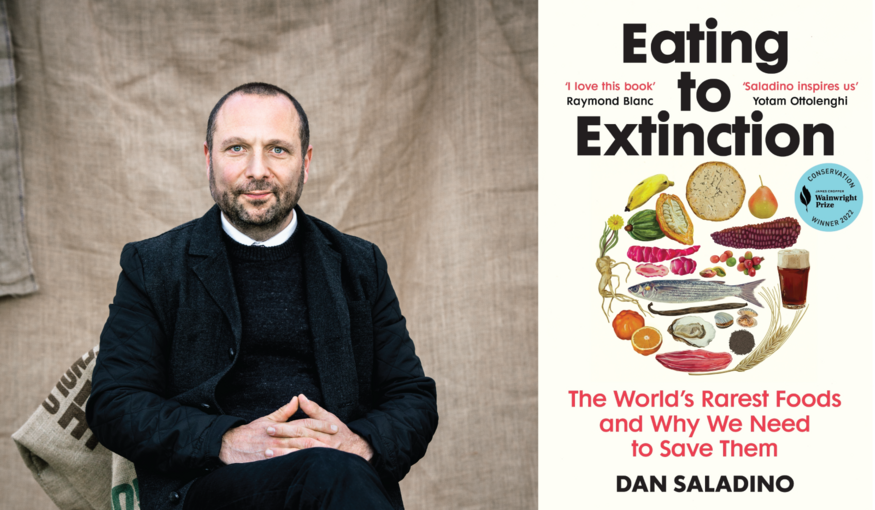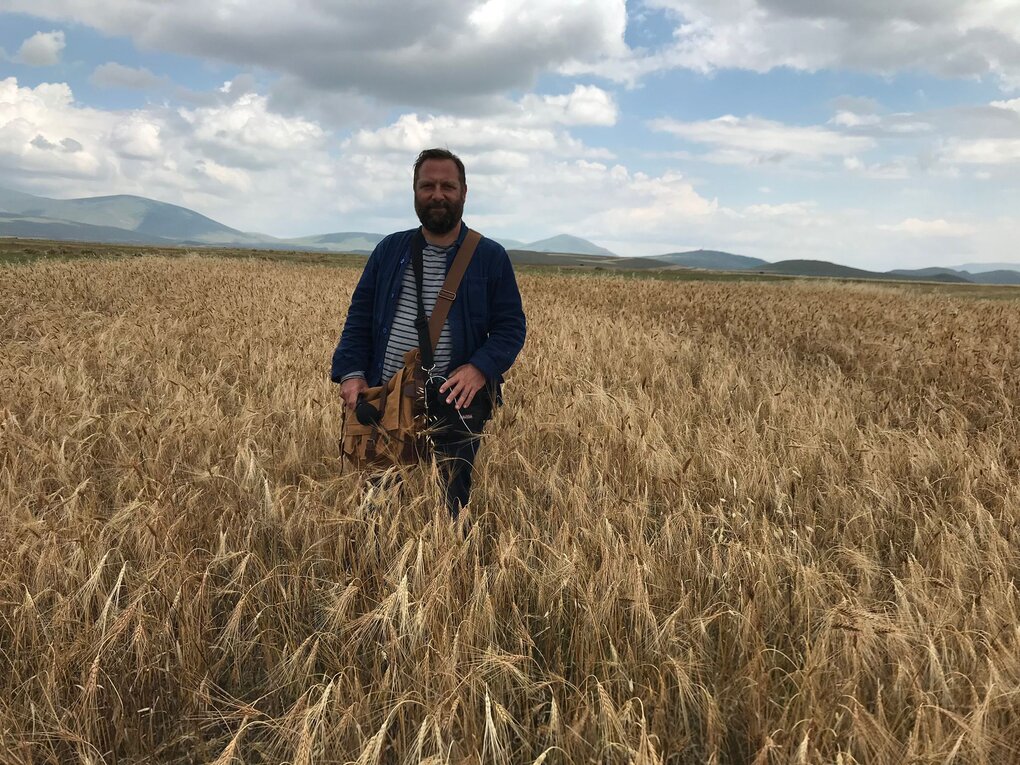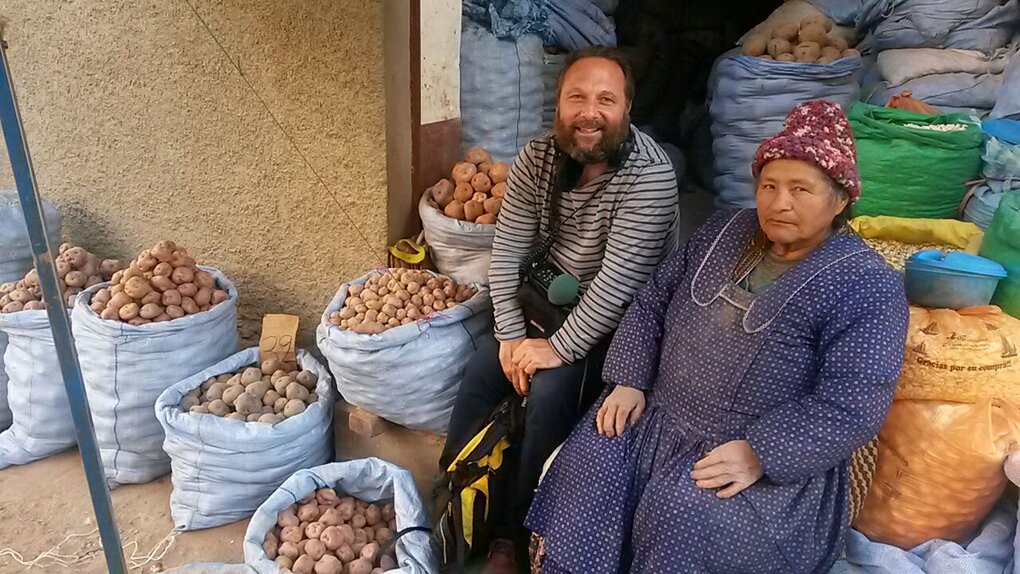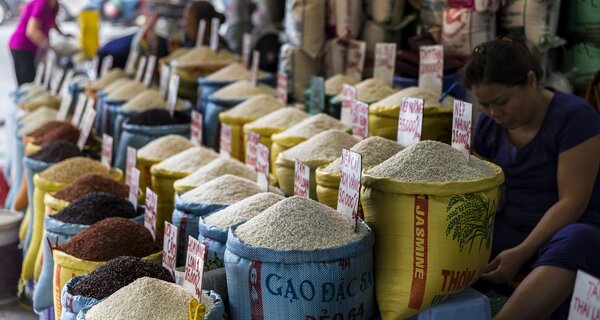Mainstreaming Crop Diversity: Dan Saladino Tells the Stories That Really Matter

24 April 2024
Twenty years ago, ‘biodiversity’ was a niche term that was mainly used in scientific circles. Now, we – well, some of us – discuss the relative merits of heirloom apples and ancient cereals in supermarket check-out lines. This shift in attitudes couldn’t have happened without the storytelling of passionate crop diversity advocates like UK-based BBC journalist, Dan Saladino.
A decade ago, armed with curiosity about food and how its diversity came into being, Dan set out to write "Eating to Extinction”. In the acclaimed book, which came out in 2021, he took readers on a delicious journey through the world of endangered foods, shedding light on flavors, traditions, and histories that, sadly, face myriad threats in our modern era. Through his meticulous research and engaging storytelling, Saladino underscored the critical role that crop diversity plays in safeguarding our food heritage and ensuring a resilient future for global agriculture.
As he works on the sequel to "Eating to Extinction”, we caught up with Dan to talk about his work, travels, and stories.

Dan Saladino at a Kavilka wheat farm.
Crop Trust: What is a special food memory for you?
Dan Saladino: There is a food that, in fact, went extinct, but I managed to taste it because somebody brought it back from extinction: a type of lentil that’s grown in the Swabian region of Germany. It went extinct in the 1960s, but then a farmer travelled to Saint Petersburg, Russia, to get the seeds [from the Vavilov Institute] and bring them back into cultivation with a group of fellow growers.
The reason why it is such a fascinating food experience, as well as a feel-good food story, is because I had eaten lentils, and I thought I knew what a lentil looked like, tasted like, but when I tried the Swabian Alb lentil, it transformed my idea of what a lentil was in terms of texture and how it looked. But most importantly how it tasted: it had this earthy, rich flavor that I had not associated with lentils I had tried before.
To think that it had disappeared and gone extinct and somebody had brought it back, and it was being grown again, not by one farmer, but by 80 to 100 farmers! Traditionally, they cook it with German egg noodles (spätzle). So yes, I have tasted a lost food, and it was delicious.
Crop Trust: Are you seeing any changes in peoples' awareness of crop and food diversity?
Dan Saladino: I think people are becoming more aware of the importance and the value of crop diversity, without even realizing that they are.
I think it’s because people are concerned about biodiversity, what’s happening to land, the climate and issues surrounding climate change, they’re more aware and engaged with issues around fresh water use, too. And perhaps most importantly, at a personal level, they’re want to make decisions or choices around food that benefit their health.
All of these issues interconnect with crop diversity and the idea that seed and crop diversity give us options for the future: both in how we farm, but also in how we feed ourselves, that is going to bring health benefits to the planet and also ourselves, as well.
I think that’s the opportunity that we have: people have a personal reason to engage with crop diversity. It’s something they can do: they can learn more, they can become curious, they can be on the other end of the phone talking with the farmer who is saving a sticky rice from China.

Dan Saladino at Mercado Rodriguez, Bolivia, with potato and oca seller.
Crop Trust: What surprised you the most in writing “Eating to Extinction”?
Dan Saladino: The biggest surprise came when I finished writing, and the book went out into the world: I realized how little people knew of the stories of crop diversity.
For me personally, it was how valuable and precious for our future a lot of what would've been created by thousands of years of farming was going to be.
What I wanted to do in “Eating to Extinction” was to tell, firstly, the story of how diversity came into existence. How is it that over thousands of years, farmers and communities in different parts of the world interacted with landscapes, with nature, with plants, with animals, and created this huge amount of diversity that enabled them to survive?
Then I tell the story of how that diversity became more fragile and, in some places, was lost. I discovered when I was researching the book how bad that is.
When many people read the stories of endangered foods, or lost crop diversity, they said “I had no idea!” and that made me feel like at least I was sending a story out into the world, into the mainstream, that really, really mattered.
Crop Trust: Tell us about your travels when doing research for “Eating to Extinction”?
Dan Saladino: I travelled to so many different parts of the world in search of crop diversity. I tried, in researching the book, to identify where I can still go that connects me to stories of origins, as well: the centres of crop diversity.
That took me to China, for example. I ended up arriving in Chengdu and then travelling for three hours in Sichuan province and – it seemed to me – the middle of nowhere, and there I met a farmer who was keeping alive the cultivation of a type of rice that in the rest of the region had disappeared. It was a glutenous type of rice. It was called “red mouth sticky rice,” and I found it when I was looking through a catalogue of endangered foods, the Ark of Taste.
So I travelled to meet the farmer, and he explained why he was growing the rice, why he had saved it, why he felt it was part of his inheritance, why his neighbours had moved onto other, more modern types of rice, and let this type of rice become endangered.
The question I had when I was with him was, “How on earth are you getting your rice to market? How are you selling it? How are you generating an income?” There was nowhere around that I could see that provided him with an opportunity to sell it.
This farmer, who was in his 70s, took his phone out of his pocket and he showed me an app, WeChat, on the screen. He was selling his rice to people in Beijing, and in other cities around China.
I realized the power of creating new supply chains, new ways of interacting with people. He was telling them the story of why he valued this endangered rice, and they were responding. I think this was a new opportunity that he had discovered, that he didn’t know existed. He could save the rice, and also he could stay farming and making an income. So the combination of the very old and traditional – crop diversity and farming – and the modern: a new, digital supply chain. That’s the future.
Photos courtesy of Dan Saladino.
Win a copy of Eating to Extinction!
🌱 Explore the flavors of our planet while supporting crucial initiatives to safeguard our food future. Whether you're a loyal follower or a fresh face, subscribe to The Dish newsletter for a chance to win "Eating to Extinction" by Dan Saladino! 📚 From seasoned subscribers to newcomers, everyone's in the running!

